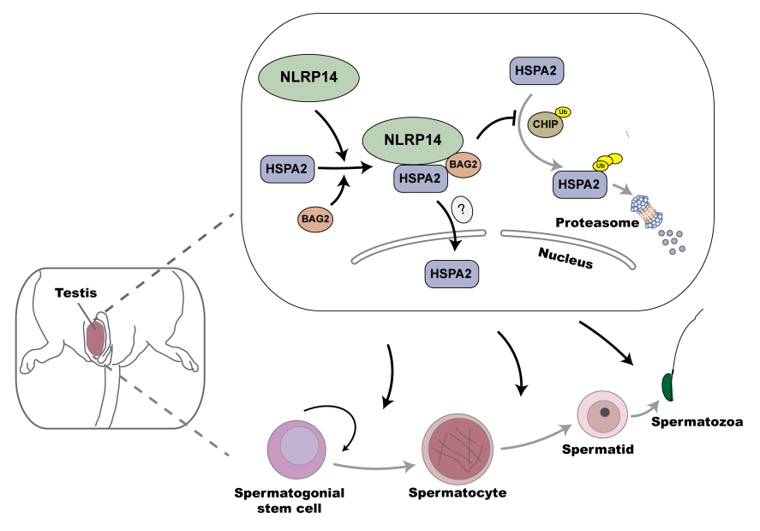PANS published online a research paper entitled “A Non-canonical Role of NOD-like Receptor NLRP14 in PGCLC Differentiation and Spermatogenesis” on August 24th 2020. This study has revealed for the first time that the complexes of nlrp14 with HSPA2 and BAG2 inhibit the ubiquitination of HSPA2 and promote its nuclear transfer, thus participating in the regulation of differentiation and spermatogenesis of PGCLCs. This discovery reveals a non-canonical Nlp14 function regulated by proteasome, which provides a new insight into the molecular mechanism of the gonad-specificNLRs family members in the process of reproductive system development. The first author of this paper is Dr. Yike Yin, an assistant researcher at the College of Life Sciences, Sichuan University, and the corresponding author is Professor Zhonghan Li.

“The role of NLRs in germ cell differentiation and reproduction is not known. Here, we identified the gonad-specific Nlrp14 as a pivotal regulator in primordial germ cell-like cell (PGCLC) differentiation in vitro. Physiologically, knock out of Nlrp14 resulted in reproductive failure in both female and male mice. In adult male mice, Nlrp14 knockout (KO) inhibited differentiation of spermatogonial stem cells (SSCs) and meiosis, resulting in trapped SSCs in early stages, severe oligozoospermia, and sperm abnormality. Mechanistically, NLRP14 promoted spermatogenesis by recruiting a chaperone cofactor, BAG2, to bind with HSPA2 and form the NLRP14−HSPA2−BAG2 complex, which strongly inhibited ChIP-mediated HSPA2 polyubiquitination and promoted its nuclear translocation. Finally, loss of HSPA2 protection and BAG2 recruitment by NLRP14 was confirmed in a human nonsense germline variant associated with male sterility. Together, our data highlight a unique proteasome-mediated, noncanonical function of NLRP14 in PGCLC differentiation and spermatogenesis, providing mechanistic insights of gonad-specific NLRs in mammalian germline development.” (Abstract)
Article link:www.pnas.org/cgi/doi/10.1073/pnas.2005533117
